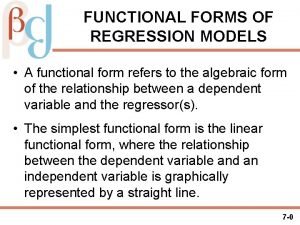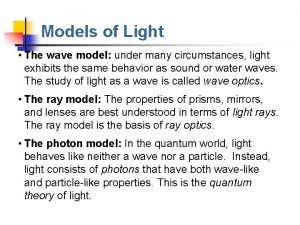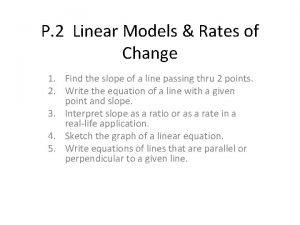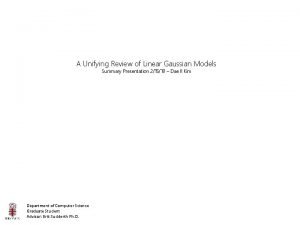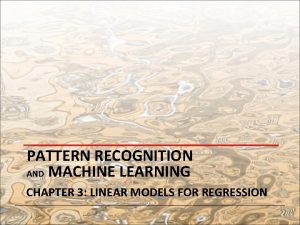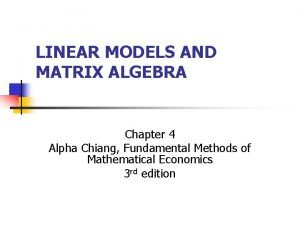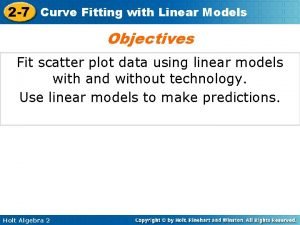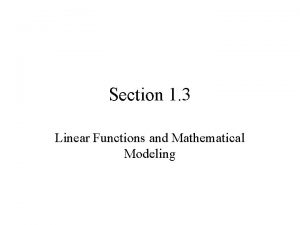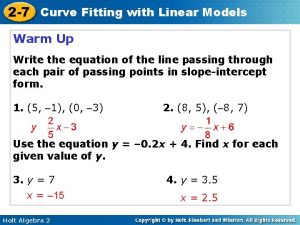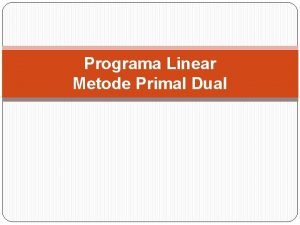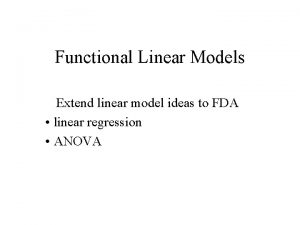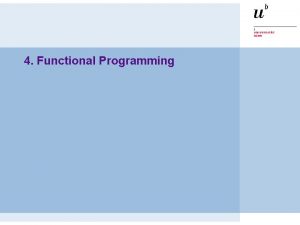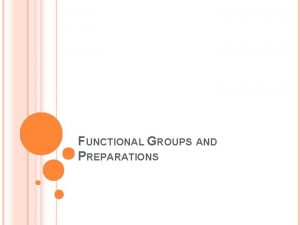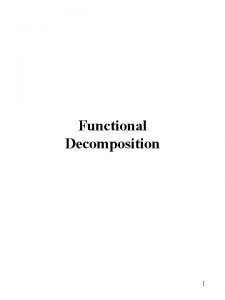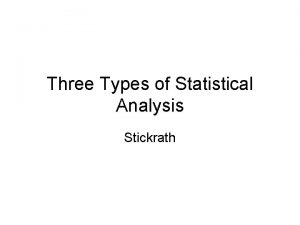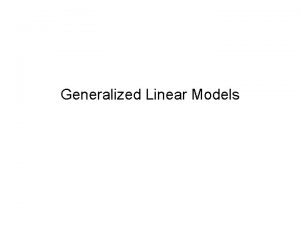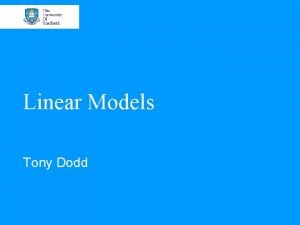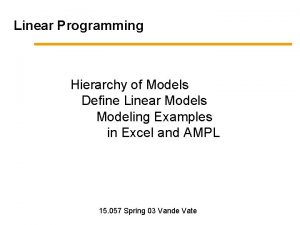Functional linear models Three types of linear model

























- Slides: 25

Functional linear models

Three types of linear model to consider: 1. 2. 3. Response is a function; covariates are multivariate. Response is scalar or multivariate; covariates are functional. Both response and covariates are functional.

Functional response with multivariate covariates n n n Response: Covariate: Model: yi(t), i=1, …, N xi 1, …, xip

How does daily temperature depend on climate zone? n n n 35 Canadian temperature stations, divided into four zones: Atlantic, Pacific, Continental, and Arctic. Response is 30 -year average daily temperature. A functional one-way analysis of variance, set up to have a main effect, and zone effects summing to zero.

Analyzing the data n n n This is straightforward. If Y(t) is the N-vector of response functions, β(t) is the 5 -vector of regression functions (main effect + zone effects), then the LS estimate is β(t) = (X’X)-1 X’ Y(t).

Main and zone effect functions

Assessing effects n n n We probably want to assess effects pointwise: For what times t is an effect substantial? This can be done using F-ratios conditional on t, pointwise confidence bands, etc. The multiple comparison problem is especially challenging here.

Response is scalar, Covariate is a single functional variable n n n Response: yi , i=1, …, N Covariate: xi (t) Model:

We have to smooth! n n n The technical and conceptual issues become much more interesting when the covariate is functional. A functional covariate is effectively an infinitedimensional predictor for a finite set of N responses. We can fit the data exactly! Smoothing becomes essential; without it, β(t) will be unacceptably rough, and we won’t learn anything useful.

Predicting log annual precipitation from the temperature profiles n n n Can we determine how much precipitation a weather station will receive from the shape of the temperature profile? What roughness penalty should we use to smooth β(t) ? We penalize the size of (2π/365)2 Dβ+D 3β, the harmonic acceleration of β(t). This smooths towards a shifted sinusoid.

The smoothed regression function n Annual precipitation is determined by: (1) spring temperature, and (2) by the contrast between late summer and fall temperatures.

The fit to the data n n n The fit is good. We see clusters of hi-precip. marine stations, and of continential stations. Arctic stations have the least precip.

What about both the response and covariate being functional? Response y(t), covariate x(s) or x(s, t). Here we have a lot of possibilities. We can predict y(t) using the shape of x(s, t) over: n all of s, especially for periodic data, n only at s = t, concurrent influence only, or for some delay s = t – δ, n s t, no feed forward, n some region Ωt depending on t. n

Predicting the precipitation profile from the temperature profile n The model is: In this case we have to smooth β(s, t) with respect to both s and t.

The regression function




The concurrent model n This time, we’ll only use temperature at time t to predict precipitation at time t:

The regression functions The influence of temperature is nearly constant over the year. Let’s see how the two fits compare.




The historical linear model n n When the functions are not periodic, it may not be reasonable to assume that x(s) can influence y(t) when s > t. The historical linear model is described in Applied Functional Data Analysis, and in talk at this conference by Nicole Malfait.

The concurrent model and differential equations n n One important extension of the concurrent model is to the fitting of data by a differential equation. A simple example is
 Removable non functional space maintainer
Removable non functional space maintainer Functional and non functional plasma enzymes
Functional and non functional plasma enzymes Enzymes
Enzymes Functional and non functional
Functional and non functional Semi log functional form
Semi log functional form What is the difference between model and semi modal
What is the difference between model and semi modal Models of light
Models of light Remedial model social work
Remedial model social work What are the 3 models of urban structure
What are the 3 models of urban structure Linear functional
Linear functional Linear and transactional model of communication
Linear and transactional model of communication Hunkins model of curriculum development pdf
Hunkins model of curriculum development pdf Linear models and rates of change
Linear models and rates of change Smcr model of communication example
Smcr model of communication example A unifying review of linear gaussian models
A unifying review of linear gaussian models Linear basis function models
Linear basis function models Matrix algebra
Matrix algebra Flair furniture company linear programming
Flair furniture company linear programming Curve fitting with linear models
Curve fitting with linear models Linear functions as mathematical models
Linear functions as mathematical models How to tell if a graph is linear quadratic or exponential
How to tell if a graph is linear quadratic or exponential Linear functions as mathematical models
Linear functions as mathematical models Curve fitting with linear models
Curve fitting with linear models Model primal dan model dual program linear
Model primal dan model dual program linear Types of functional alliances
Types of functional alliances What is functional strategy
What is functional strategy




